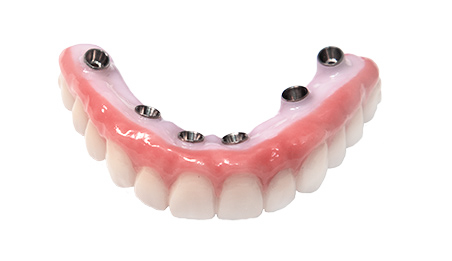The Ultimate Guide To Dental Sense
The Ultimate Guide To Dental Sense
Blog Article
Get This Report about Dental Sense
Table of ContentsGet This Report about Dental SenseExcitement About Dental SenseThe Basic Principles Of Dental Sense Indicators on Dental Sense You Should Know
are clinical gadgets operatively dental implanted right into the jaw to recover an individual's capability to chew or their appearance. They give assistance for fabricated (phony) teeth, such as crowns, bridges, or dentures. When a tooth is shed because of injury or illness, an individual can experience issues such as fast bone loss, faulty speech, or changes to chewing patterns that cause pain.Oral implant systems contain an oral implant body and dental implant abutment and might likewise include a joint addiction screw. Front tooth filling. The oral implant body is surgically put in the jawbone instead of the tooth's origin. The dental implant joint is normally connected to the dental implant body by the abutment fixation screw and expands via periodontals into the mouth to sustain the connected synthetic teeth
(https://issuu.com/dentalsense1)Framework of The Oral Implant System selecting dental implants, speak to your dental company regarding the potential benefits and risks, and whether you are a prospect for the procedure. Things to consider: Your total wellness is a vital factor in determining whether you are an excellent prospect for oral implants, how much time it will take to recover, and the length of time the implant may remain in area.
Smoking cigarettes may influence the healing procedure and reduce the long-lasting success of the implant. The recovery process for the dental implant body may take several months or longer, throughout which time you typically have a temporary joint instead of the tooth. the oral implant treatment: Very carefully adhere to the dental hygiene instructions offered to you by your dental service provider.
Our Dental Sense Ideas
Implant failing can lead to the demand for one more medical procedure to deal with or replace the dental implant system. Recovers the ability to eat Restores cosmetic look Helps keep the jawbone from reducing due to bone loss Protects the health of the surrounding bone and gum tissues Helps maintain surrounding (nearby) teeth steady Boosts quality of life Damages to bordering natural teeth during implant placement Injury to the surrounding tissues throughout surgical procedure, such as sinus opening Injury throughout surgery (as an example, crack of bordering jawbone) Inadequate function, such as seeming like the teeth do not attack together typically An experience that the tooth hangs or twisting in area resulting from an abutment screw loosening Implant body failure (looseness of the implant body) because of systemic infection, which might be most likely in clients with unrestrained diabetes mellitus due to local infection in bone and periodontals sustaining the implant body because of delayed healing, which may be a lot more most likely in people that smoke Trouble cleaning the gum tissues around the dental implant, leading to poor oral health Unattended gum condition Post-surgical numbness due to nerve impingement or damage Constantly alert wellness treatment service providers and imaging specialists that you have dental implants prior to any kind of magnetic resonance imaging (MRI) or x-ray procedures.
FDA is not knowledgeable about any adverse occasions reported for MRI or x-ray treatments with oral implants. Oral implants systems are normally made from materials that follow international agreement requirements of the International Organization for Standardization (ISO) or ASTM International. These standards have information of what makes a risk-free material.

A dental implant is a framework that changes a missing out on tooth. With screw-like devices, the specialist inserts a dental implant into the jawbone, and it acts as a support for a fabricated tooth, called a crown.
Dental Sense Things To Know Before You Get This
Some people are not eligible for dental implant surgical treatment. It is for dental doctors to operate individuals with: severe illnessuncontrollable metabolic diseasebone or soft cells condition or infectionIf these concerns are settled, an individual can have the surgical procedure. In, dental surgeons avoid from operating people with: If individuals with any one of the above go through dental implant surgical procedure, there is a greater danger of the implant failing.

Dental dental implant surgical procedure is an individualized process. It's not the same for everyone. However the adhering to provides a basic review of what you can expect your dental expert, oral specialist, periodontist or prosthodontist to do: Put the dental implant surgically. Offer you time to recover. Connect the post and last crown, bridge or denture.
Next, your cosmetic surgeon will very carefully put the oral implant right into your jaw. If your dental implant is near the front of your mouth, your dental practitioner will make a temporary tooth for you to use till you recover.
Some Known Details About Dental Sense
Your service provider can inform you what to expect in your scenario. During the recovery phase, your jawbone ought to fuse to the dental implant. This process, called osseointegration, is important for stability and long-term success. This procedure can take anywhere from three to 9 months. Sometimes, it might take much longer.
When your implant heals, your dental practitioner can connect the abutment (little port post) and your final reconstruction (crown, bridge or denture). This typically takes about one hour to finish and may require a 2nd small surgical treatment. You should not feel any kind of pain during your dental implant procedure since your company will certainly make use of drug to numb your gum tissues.
Report this page